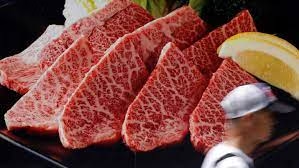At Home Plate BBQ in Beijing, the classic taste of American-style brisket is getting a Down Under twist. As the US-China trade war continues to ripple through global supply chains, the restaurant is phasing out its star ingredient: American beef.
Previously sourced entirely from the United States, Home Plate’s beef supply is transitioning to Australian meat. The change, driven by retaliatory Chinese tariffs that have made US beef unaffordable, will take full effect once the last of their US brisket – about 7 to 8 tonnes used monthly – is gone.
“Once we deplete our stocks, we’ll be switching fully over to Australian M5,” said Charles de Pellette, Home Plate’s operations director. “We still think that it’s the same taste and quality and flavour, but we’ve had to switch just due to market pressures and the tariffs.”
A Casualty of the Trade War
US beef has become one of many victims in the escalating trade conflict between the world’s two biggest economies. Long before tariffs kicked in, supply issues and prolonged dry weather had already driven up prices. Now, with Beijing imposing a 125% retaliatory tariff – on top of an existing 22% – US brisket prices have soared, nearly doubling over the past year.
The result: American beef is no longer viable in the Chinese market. For Home Plate and similar venues, the shift isn’t just about taste – it’s about survival.
Australia Steps In
Australian beef has quickly stepped in to fill the void. Its brisket is about 40% cheaper and, according to de Pellette, delivers the same satisfying flavour profile. Beginning in May, Home Plate’s signature ribs, brisket, and sausages – all slow-smoked in Texas-style tradition – will be made entirely with Australian meat.
While US beef exports to China accounted for just $125 million a month – a fraction of total bilateral trade – its vanishing act on Beijing menus signals broader consequences of the ongoing dispute.
For Beijing foodies, the barbecue will go on. But behind the smoky goodness, a global economic story simmers.



